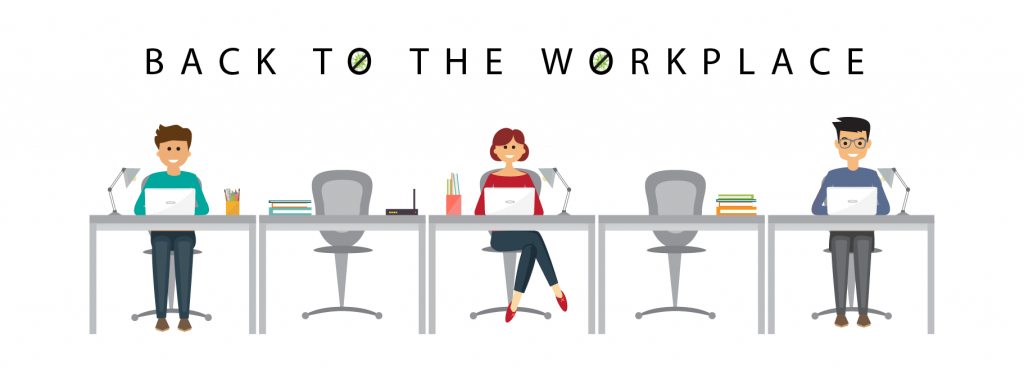Back To The WorkPlace: Why Some Companies Want Everyone Back In The Office

The COVID-19 pandemic has forced most companies to allow their employees to work from home. However, with the vaccine rollout underway and cases declining in many parts of the world, the question of how employees will function in the post-pandemic world is still in question. Surveys show that many workers are accustomed to the benefits of working from home and want flexibility wherever they work to keep the pandemic going. While some companies have announced that they will continue to work remotely, others plan to take a hybrid approach, allowing employees to work from home for a few days and at office fees for the rest of the time. But there are some companies that want to go back to the office with all their employees. Whatever the case may be, it is clear that the pandemic has changed the workplace landscape forever and that employees will need to adapt accordingly.
Testing facilities
Curian, a consumer product research and insights firm with about 350 people in the United States, has half of its testing facilities at work. The remaining facilities are based in corporate offices. Last spring, the company shut down its testing facilities for around a month, however they have reopened and have given full compensation to workers who returned in stages. However, more than a year ago, the corporate office personnel were working from home. And while productivity has risen, Bisegalia claims that’s part of the problem.
The office staff will return to a 50% rotational schedule by July 1, and then all employees will be working in the office 100% of the time by October 1. Some employees are already working in the office.
Vaccination rates
While the company’s vaccine rates across the country and among its own employees are being studied on a voluntary basis, it said it is concentrating on vaccination rates nationally and among its staff. “We feel this number will be greater than the national average,” Bisceglia said.
While a recent employee poll revealed that 65% of WorkplaceDynamics’ employees want to return to office expenses in specific roles, they recognize that the shift isn’t simple.
“This has been a very moving behavior for over a year… This will most likely be the most difficult management of change we have to undertake. Returning people to their offices will be a significant task.” “We appreciate it all… but the shift change management we must face – bringing working parents back to office expenses – will be the most challenging.”
A flexible way of working
If you are able to stay home from work for a few days before the outbreak, you may continue doing so. But those who cannot will be expected to return.”For full-time renters in full fees, of course, we expect to arrive in October, safely,” he said.
To assist with the transitioning process, employees will be split into teams and asked to come into the office two days a week. For example, finance and account services may come on Monday and Wednesday while marketing and data services comes on Tuesday and Thursday.
The hoteling system will be used, which means workers will not have a permanent desk but will reserve one when necessary. Productivity should increase once everyone returns since employees will spend more time commuting and socializing while remote – however, he feels that the advantages of being independent outweigh the danger.
Come back to a full-time office work
In the United Kingdom, business connectivity provider Convergence Group intends to return some staff to a full-time office. The majority of the group will take a hybrid approach, according to Hale. “It’s part of our business that we need to interact with one another,” added Frankie Hale, director of strategy and transformation at Convergence Group.
The company has a 24/7 call centre; however, this made it difficult for teams to work remotely when they were in the office due to the same resolvement pace.
Hale said, “If there is a major service outage or problem, they can just go into the room and get on the whiteboard. It takes 10 minutes to solve it instead of trying to get everyone together on teams or zoom.”
The teams at Schoenberg Finkel Biederman Bell Glazer rotate working in the office every other week, with some employees coming in every day. This includes workers from departments such as accounting and office management.
“We live for being together and adore working as a close-knit group,” said Adam Glazer, managing partner of the company that consists of 50 people. “When everyone is present and available to work together, we do our best.”
Although there are a few advantages to working in the virtual world – like not having to incur travel costs to take someone’s testimony – it can be difficult to effectively collaborate and communicate with others.
Benefits of working from home
While working from home has its perks, younger workers miss out on learning opportunities that come with in-person interactions. According to Glazer, “It’s very valuable for young attorneys who are still learning the craft, taking samples, and responding, so staying in that fee is very helpful.”
“When something unexpected happens, employees will be relieved to work from home,” Glazer said. “We’ll be more flexible and accepting of requests to work remotely in the future.” “We are concerned about restoring the pre-epidemic atmosphere of the operation by allowing some modifications,” Glazer said.
Javier Niskanen is a crypto investor who is passionate about helping others achieve success. He has a background in computer science and has been involved in the crypto world since early 2017. Javier is excited to see how blockchain technology will change the world for the better.







